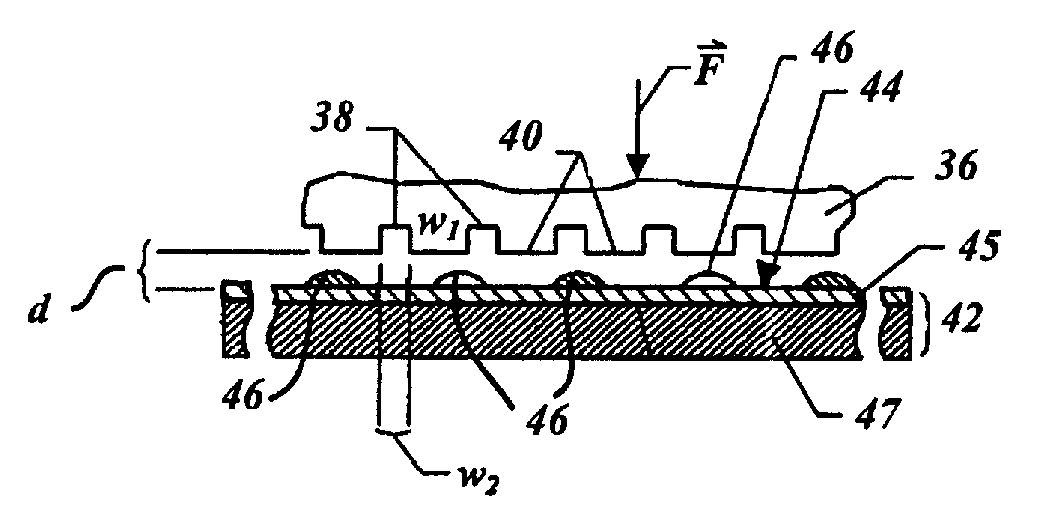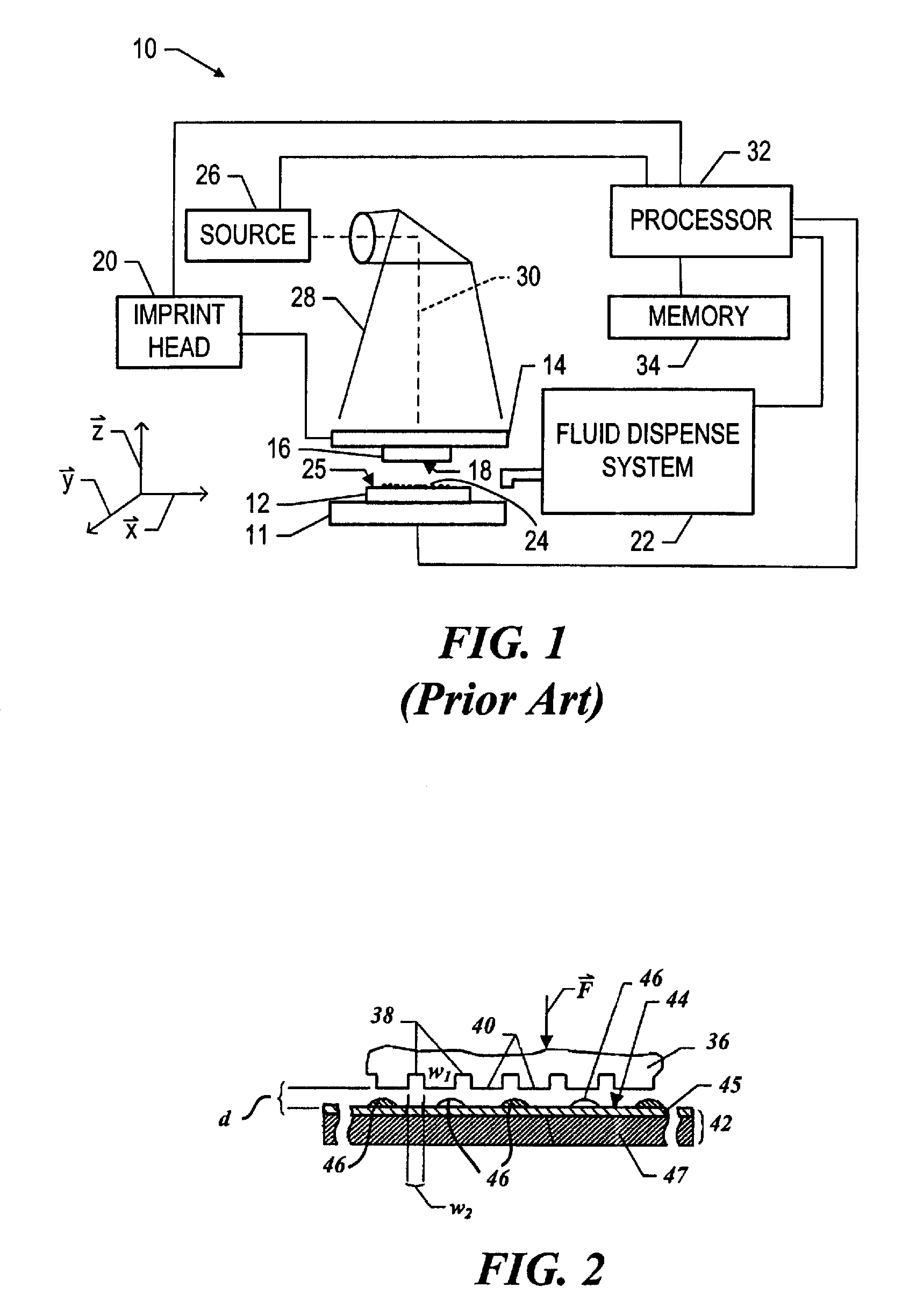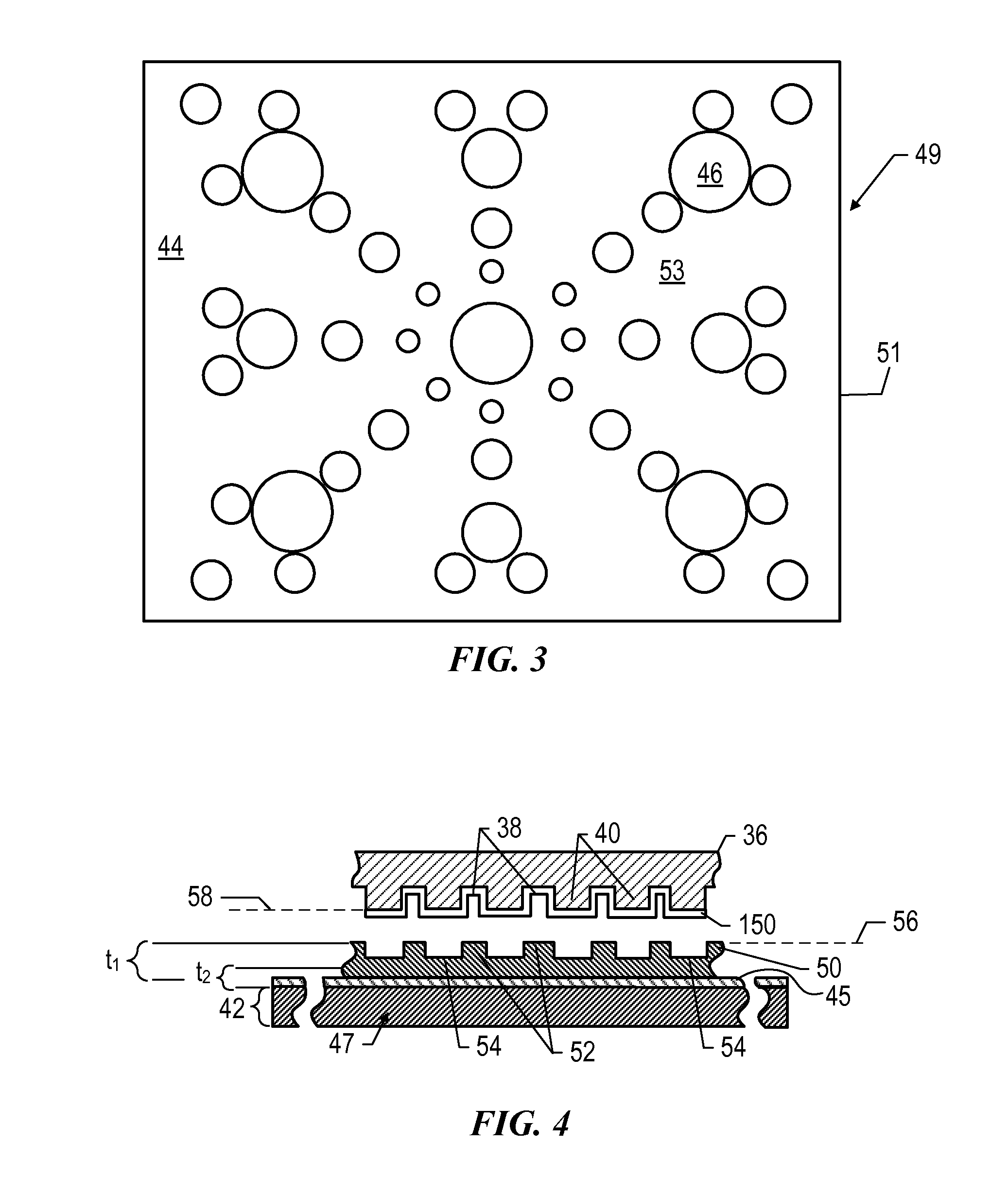Method for controlling distribution of fluid components on a body
a fluid component and body technology, applied in the field of nanofabrication of structures, can solve the problem of uneven distribution of surfactants in the lamella layer, and achieve the effect of increasing the probability
- Summary
- Abstract
- Description
- Claims
- Application Information
AI Technical Summary
Benefits of technology
Problems solved by technology
Method used
Image
Examples
Embodiment Construction
[0020]Referring to FIGS. 1 and 2, a mold 36, in accordance with the present invention, may be employed in system 10, and may define a surface having a substantially smooth or planar profile (not shown). Alternatively, mold 36 may include features defined by a plurality of spaced-apart recessions 38 and protrusions 40. The plurality of features defines an original pattern that forms the basis of a pattern to be formed on a substrate 42. Substrate 42 may comprise a bare wafer or a wafer with one or more layers disposed thereon, one of which is shown as primer layer 45. To that end, reduced is a distance “d” between mold 36 and substrate 42. In this manner, the features on mold 36 may be imprinted into a conformable region of substrate 42, such as an imprinting material disposed on a portion of surface 44 that presents a substantially planar profile. It should be understood that the imprinting material may be deposited using any known technique, e.g., spin-coating, dip coating and the ...
PUM
| Property | Measurement | Unit |
|---|---|---|
| length | aaaaa | aaaaa |
| viscosity | aaaaa | aaaaa |
| wavelength | aaaaa | aaaaa |
Abstract
Description
Claims
Application Information
 Login to View More
Login to View More - R&D
- Intellectual Property
- Life Sciences
- Materials
- Tech Scout
- Unparalleled Data Quality
- Higher Quality Content
- 60% Fewer Hallucinations
Browse by: Latest US Patents, China's latest patents, Technical Efficacy Thesaurus, Application Domain, Technology Topic, Popular Technical Reports.
© 2025 PatSnap. All rights reserved.Legal|Privacy policy|Modern Slavery Act Transparency Statement|Sitemap|About US| Contact US: help@patsnap.com



